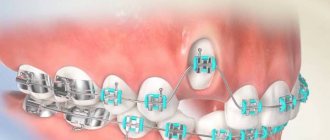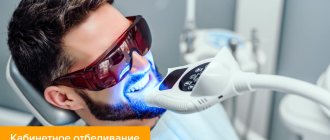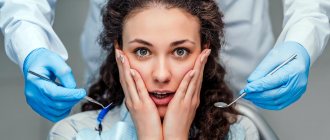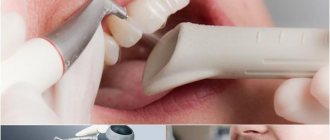Reproduction of infection
Reproduction occurs in the nucleus of the affected cell. Invading a cell, the herpes virus uses its structural components as building material, and also subjugates the cell’s synthesizing systems, “forcing” the production of substances necessary for the construction of new viruses. After infection of a cell, the synthesis of new viral proteins begins after 2 hours, and their number reaches a maximum after about 8 hours. The fastest rates of cloning of virions occur in the cells of the epithelium and mucous membranes, blood and lymphatic tissues.
Virus transmission
The virus is transmitted mainly by contact:
- direct contact (including sexual transmission),
- airborne droplets,
- through household and hygiene items (shared towels, handkerchiefs, etc.)
- vertical paths (from mother to fetus). Such infection can occur during childbirth (contact with the mother’s birth canal), transplacentally, or the virus enters the uterine cavity through the cervical canal of the cervix (ascending route).
Classification of viruses
According to the existing international classification, primary and recurrent genital herpes . The latter, in turn, is divided into typical and atypical clinical forms and asymptomatic viral shedding.
The term “genital herpes” arose at the beginning of the 20th century. to designate the lesion on the skin and mucous membranes of the external genitalia. With the development of virological research methods, information about “atypical” forms of the disease began to appear. The diagnosis “atypical form of genital herpes” is made by gynecologists to designate a chronic inflammatory process of the internal genitalia (colpitis, vulvovaginitis, endocervicitis, etc.) in the presence of a laboratory confirmed herpetic nature of the disease, in contrast to the “typical” picture of the disease, in which on the mucous membrane These organs have lesions with vesicular-erosive elements. At the same time, herpetic lesions of the urethra, anal area and rectal ampulla fall out of this group, although these organs are anatomically and functionally closely related to the genital area.
Research conducted at the Herpetic Center has shown that diagnosing the HSV virus is now complicated due to the fact that in 65% of cases the disease is atypical.
Routes of infection
Infection is possible not only through sexual intercourse, although this is the most common cause. HPV infection is also possible through household means:
- when using common hygiene and tableware;
- through contact with an infected person in the acute stage in the presence of microtraumas;
- the possibility of HPV transmission through household items is still being debated.
The transplacental route of infection is rare - from mother to child, even at the stage of intrauterine development of the fetus.
How long does the virus live?
Fully formed and ready for subsequent reproduction, “daughter” infectious virions appear inside the infected cell after 10 hours, and their number becomes maximum after 15 hours. During its entire life, the primary (“mother”) viral particle reproduces from 10 to 100 “daughter” ones. viral particles, and 1 ml of the contents of a herpetic vesicle contains from 1000 to 10 million viral particles. Virions are extremely thermostable - they are inactivated (destroyed) at 50-52 degrees for 30 minutes, at 37.5 degrees for 20 hours, stable at 70 degrees, and remain in tissues for a long time. On metal surfaces (coins, door handles, water taps) it survives for 2 hours, on plastic and wood - up to 3 hours, in damp medical cotton wool and gauze during the entire drying time at room temperature (up to 6 hours). A unique biological property of viruses is the lifelong preservation of viruses in a modified form in the nerve cells of the regional (relative to the site of virus introduction) ganglia of sensory nerves. The most active herpes simplex viruses (labial and genital) in this regard, the least active are the Epstein-Barr virus.
All known varieties of viruses are capable of recurrence . For example, recurrence of infections caused by the herpes simplex virus is often observed against the background of stress, nonspecific endocrine disorders, changes in the geographic area of residence, increased solar radiation, etc. Asymptomatic relapses of cytomegalovirus infection are most often observed in pregnant women and patients receiving immunosuppressive and hormonal therapy . In general, herpetic infections take a recurrent course in no more than 8-20% of patients with obvious malfunctions of the immune system.
Herpes viruses can lead to infection of the fetus during pregnancy. Pregnancy is very often a physiological immunosuppressive factor (there is a natural decrease in immunity). In the cervical canal of pregnant women, the risk of intrauterine infection of the fetus, as well as infection of the child during childbirth, significantly increases. The virus is the most common sexually transmitted infection in pregnant women. Therefore, before an expected pregnancy, we recommend that expectant mothers be examined for the presence of herpes simplex virus and cytomegalovirus infection on the mucous membranes of the genital organs, determine the presence and level of antibodies to these viruses, and, if necessary, receive a course of preventive treatment.
Organs and systems of the body that can be affected by the herpes simplex virus and the diseases it causes:
- Optic tract (keratitis, iridocyclitis, chorioretinitis, optic neuritis, phlebothrombosis)
- ENT organs (pharyngitis, “herpetic sore throat”, laryngitis, external ear, sudden deafness, vestibular disorders)
- Oral organs (stomatitis, gingivitis)
- Skin and mucous membranes (face, lips, genital herpes, etc.)
- Lungs (bronchopneumonia)
- Cardiovascular system (myocarditis, myocardiopathy, participation of HSV in the processes underlying atherosclerosis)
- Gastrointestinal tract (hepatitis, ileo-colitis, proctitis)
- Female genital organs (colpitis, intrauterine HSV infection: endometritis, amnionitis, chorionitis, metroendometritis, reproductive dysfunction)
- Male genital organs (prostatitis, urethritis, sperm damage)
- CNS (encephalitis, sympathoglioneuritis, nerve plexus damage)
- Psycho-emotional sphere (depression, aggravating influence of HSV on the course of hydrocyanic dementia and nuclear schizophrenia)
- Lymphatic system (HSV lymphadenopathy)
Diagnostics
In order to more reliably determine whether the neoplasm belongs to anogenital warts, a test is carried out with a 5% solution of acetic acid, after treatment with which papillomas in intimate places retain a grayish-white color with a changing, intensifying vascular pattern of normal skin. Laboratory tests can also be used in diagnosis - identification of the HPV genotype with a prognosis for the course of the disease.
To diagnose precancerous conditions against the background of papillomas in intimate places in women, consultation with an obstetrician-gynecologist and urologist is recommended when papillomas are localized in intimate places in men, for example, with intraurethral localization. If there are papillomatous processes in the anal area, consultation with a proctologist is recommended.
Reminder in case of illness
It must be remembered that when a rash appears, a person becomes acutely contagious. Moreover, not only those around him can suffer, but also the sick person himself. For example, from a lesion on the lips with dirty hands, the herpes virus can be carried into the eyes or genitals.
Therefore, it is important to follow the following rules
- Do not touch lips affected by rashes. If you touch them, wash your hands thoroughly.
- Use your own towel and utensils.
- If your lips are affected, do not squeeze the blisters or pick off the scabs. This may cause additional skin infection.
- Refrain from kissing and oral-genital contact.
- If you wear contact lenses, do not wet them with saliva to moisten them.
- Apply antiviral cream to your lips not with your fingers, but with cosmetic sticks.
Herpes symptoms
Cold sores are caused by human infection with herpes simplex virus type I (HSV-I). As a rule, a person first encounters a herpes infection in early childhood, becoming infected from a patient through kissing or sharing cutlery. It is also possible to become infected from relatives through airborne droplets from sneezing and coughing.
The most common form of infection caused by HSV-I is facial herpes, or “cold sores.” Moreover, during the first episode of HSV in a child, not only the lips are often affected, but also the skin in the area of the nasolabial triangle and the nasal mucosa. There are also herpetic stomatitis and herpetic sore throat. The virus then spreads along the nerves and permanently “settles” in the nerve ganglia. According to statistics, up to 90-95% of people are infected with the HSV-I virus. But this infection manifests itself in different ways. In more than 80% of those infected, the virus is in an inactive form and does not make itself felt.
However, in 17-20% of people, the HSV-I virus periodically “wakes up” and begins to actively multiply. This process is called relapse and is accompanied by the appearance of rashes on the face.
The most common factors that can trigger a recurrence of herpes include:
- hypothermia;
- colds and other viral or bacterial infections;
- overwork;
- stress;
- injury;
- menstruation;
- “strict” diets, hypovitaminosis and exhaustion;
- excessive passion for tanning;
The virus can infect any area of the skin or mucous membranes of the body. But most often, during a relapse, the lips and nasal mucosa become targets. For some, herpes on the face occurs only occasionally, being mainly a cosmetic defect. But for people with severely reduced immunity, the presence of the virus in the body can become a serious problem. So, for example, in AIDS patients, cancer patients, and people who have undergone organ transplantation, the common herpes virus can cause damage to internal organs.
Causes of papillomas
The cause of the appearance of papillomas in intimate places is the human papillomavirus (HPV), which circulates in the blood of almost every man and woman, starting from adolescence.
According to WHO, 80-90% of the population is infected with HPV. Most often, papillomas occur in young people who have a large number of sexual partners. Genital-anal papillomas are typical manifestations of human papillomavirus infection. In 90% of cases they are caused by the sixth and eleventh types of HPV.
In the daily life of every person, the following exposures increase the risk of infection:
- smoking;
- stress;
- using other people's hygiene products;
- visiting baths, saunas;
- shaking hands with carriers at the acute stage;
- decreased immunity.
Globally, the spread of HPV is influenced by many factors, including socioeconomic, medical, hygienic and geographic. The virus can stay in the body for years without showing itself. Its activation is provoked by a weakening of the protective forces of the immune system, which entails the appearance of papillomas in intimate places, both in women and men.
Pregnancy, hormonal imbalances, metabolic disorders, acute viral infections, long-term chronic diseases, poor nutrition and lack of sleep can also trigger the growth of papillomas in intimate places.
Treatment of herpes
VACCINE “VITAGERPAVAC”
against herpes simplex virus (HSV) serotypes Ι and ΙΙ
Relapses that affect the lips or nasal mucosa respond well to local treatment with cream or ointment. In more severe cases, your doctor may recommend pills.
It must be remembered that early initiation of herpes treatment is the key to success. Before the bubbles appear, the lips become very sensitive, itching and tingling occur. And if the disease begins to be treated at the stage of these precursors, then rashes may not appear, and recovery will occur as soon as possible.
Today there are no drugs that would completely destroy the herpes virus in the human body. However, there is a group of special antiviral agents that effectively suppress the reproduction of HSV-I.
If you start using antiviral cream for existing rashes, healing occurs faster than with other treatment methods.
Taking tests to diagnose herpes and CMV infection.
INITIAL CONSULTATION
from 2,500 rub.
Probability of infection
Women and men have an approximately equal risk of becoming infected without knowing it at all, since the peak of infection occurs in adolescence and older, when alertness to herpesvirus, papillomavirus, and HIV infection decreases.
At the same time, more attention is paid to sexually transmitted diseases, which, however, are also characterized by high dynamics of infection.
The number of sexual partners remains an important point, since today more than 190 types of HPV have already been described and every year there are more strains of the virus. The International Agency for Research on Cancer identifies 12 strains that are associated with the development of cancer of various locations:
- cervix;
- vulva;
- vagina;
- anal canal;
- penis.
By choosing the smallest number of sexual partners, the risk of becoming infected with HPV, including its oncogenic strains, is significantly reduced.
It is necessary to remember about personal hygiene, as well as the existence of vaccination, which reduces the risk of developing HPV by 95%. It is more effective to vaccinate before the age of 14 years, but up to 25 years of age is also possible. The vaccine provides the greatest protection if it was administered before the onset of sexual activity.











